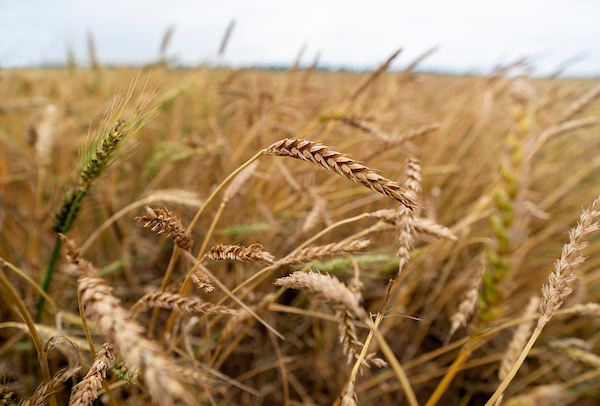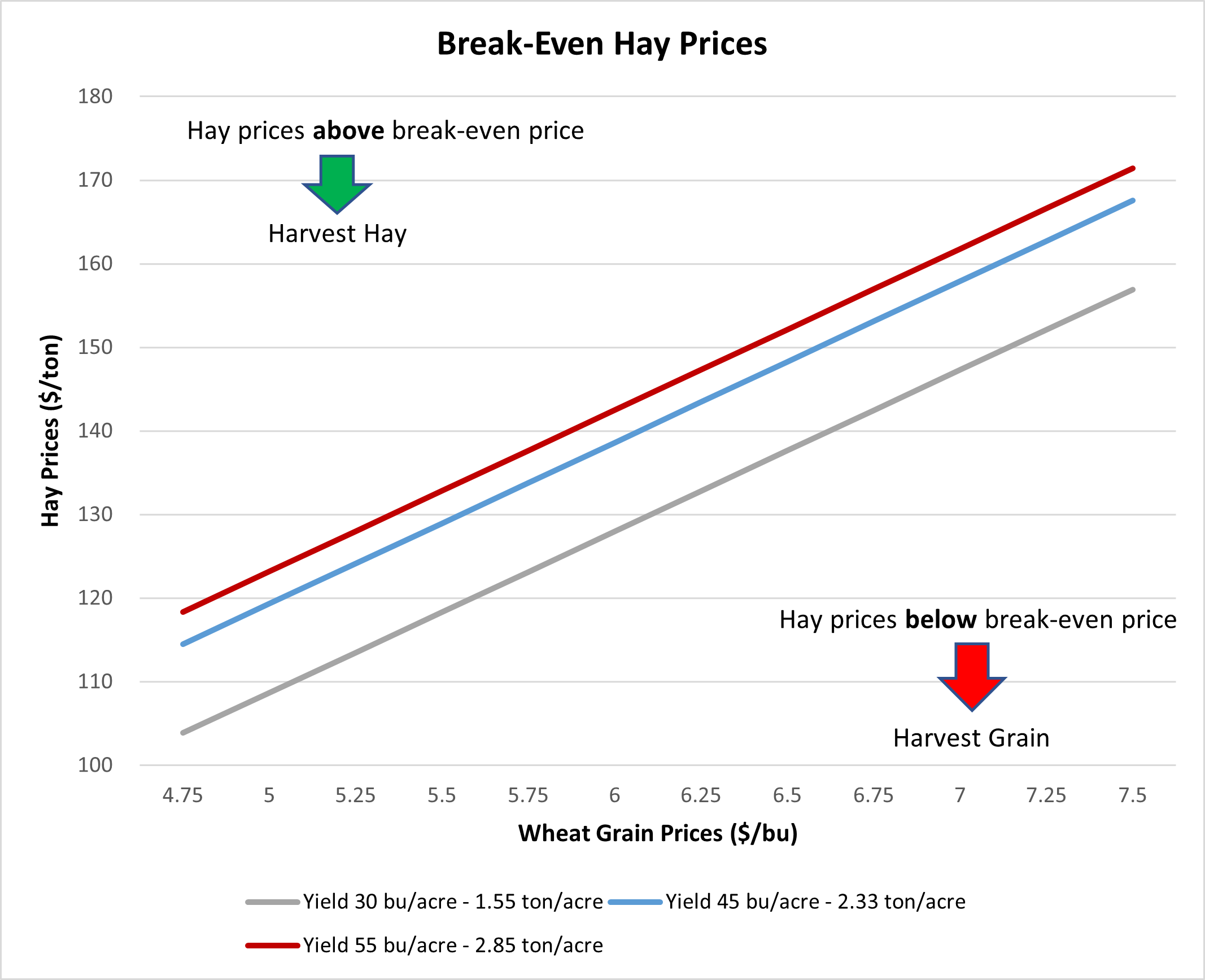
(Laura McKenzie/Texas A&M AgriLife Marketing and Communications)
Low wheat grain prices in our Texas region have lowered our profitability expectations in our area. Today, we will compare and analyze what may be more convenient: baling our wheat or harvesting it.
Wheat grain or bale
A couple of weeks ago, we discussed the differences between grazing out and harvesting the grain of our wheat fields. Today, we will analyze baling or harvesting. Analyzing available alternatives for our wheat is always convenient according to relative prices of wheat hay and grain, our expected yield, production costs, rotation, available harvest or baling equipment and cost, insurance, etc. This year, dryland conditions are much better than the ones we had last year due to the drought. However, future farm wheat prices are below our total cost breakeven price.
The “Wheat and Small Grain Decision Aids” Excel spreadsheet is a great tool for analyzing the economic and financial aspects of those decisions. You can download this decision from our District 3 website (https://vernon.tamu.edu/extension-projects/d3-agricultural-economics/ ).
For these analyses, we will use the District’s 3 Enterprise Budgets. There will be differences in costs between our budgets and your expenses. Input costs might differ, considering the high volatility of their prices these last months. However, your costs will mainly vary according to the technology and agronomic practices used in each field. We assumed that we custom-hire harvesting and baling equipment in all these cases. However, from a cash cost perspective, owning your harvesting or baling equipment will make a difference when we compare both alternatives.
Wheat Harvest Grain vs. Wheat Bale Hay
We should always consider analyzing these two options, given that the best alternative mostly depends on the relative prices of the wheat grain and the ton of hay when harvesting is an option. Moreover, finishing the wheat earlier might allow us to plant cotton if the crop rotation and soil moisture allow it and if it is profitable.
To calculate the potential hay production, we consider that the grain yield corresponds to 40% of the total biomass production. Therefore, a 45 bushels/acre wheat yield would produce a total biomass of 3.1 tons per ha. We assume we bale and harvest 76% of the total potential biomass, yielding 2.3 tons/acre (Table 2) (Wheat Hay vs. Grain: A comparison of economic opportunity, Reagan Noland, Bill Thompson, and Clark Neely). Estimating your grain and hay yield potential is crucial in comparing these options.
In the example below, hay bailing is a better option given the lower wheat grain prices and assuming wheat hay prices of $160/ton or $80/bale. This highly depends on the prices you are planning to get on your wheat bales (Table 1). We assumed we would hire machinery for harvesting and baling. Keep in mind that these results may be different on farms with equipment for harvesting grain or baling hay.
Table 1. Wheat Grain Harvest vs. Wheat Bale Hay Profitability
The other way to use this information is to see at what price we must sell our hay to have a similar wheat grain profit margin. The Decision Aid will use your data and costs to calculate these hay breakeven prices (Graph 1). We might consider baling our wheat if we can sell our hay production above the hay breakeven price for a given wheat price and expected grain yield. For example, for an estimated yield of 45 bu/acre and a price of $5/bu, we would only want to bale our wheat if the net price per ton of hay is greater than $119 (As long as we have a production of 76% of the estimated total biomass, which is equivalent to 1.04 ton per acre).
Graph 1. Breakeven Hay Prices.
The Wheat and Small Grain Decision Aids is an economic and financial tool to help every farmer decide from that point of view. Using your data, yields, prices, and costs is essential to better analyzing these alternatives. These examples reflect today’s wheat conditions and expectations. Please let us know if you need help working with this decision aid to help you make better decisions.